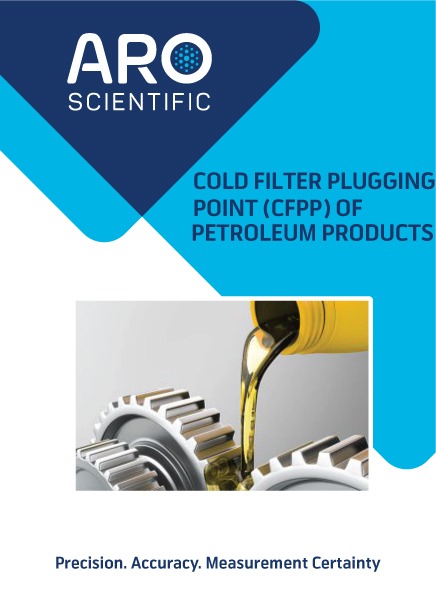Guide for Understanding Saybolt Colour of Petroleum Products

Overview of Saybolt Colour in Petroleum Products
Saybolt Colour is a crucial measurement in the petroleum industry, defining the colour of various petroleum products, including refined oils such as undyed motor and aviation gasoline, aviation turbine fuels, naphtha, kerosine, pharmaceutical white oils, diesel fuel oils, heating oils, and lubricating oils and petroleum waxes. This colour parameter is essential for quality control and ensuring product consistency. The Saybolt colour scale varies, the faintest coloration +30, the darkest evaluable Saybolt colour number is -16.
Importance of Saybolt Colour in Petroleum Products
Saybolt Colour holds significant importance in the petroleum industry as it plays a pivotal role in quality assurance and product consistency. The colour of petroleum products can indicate purity, processing quality, contamination and even product performance characteristics. Saybolt Colour allows users to make informed decisions regarding product handling, blending, and end-use applications. Companies can ensure that products meet industry standards and customer expectations.
Factors Affecting Saybolt Colour Measurement
Factors such as impurities, oxidation, and light exposure can influence the Saybolt Colour measurement of petroleum products. Impurities from the refining process, storage conditions, and transportation can alter the colour, indicating potential variations in quality. Oxidation can lead to darkening, affecting the Saybolt Colour scale reading. Additionally, exposure to light can also impact the colour of the product. Understanding these factors is crucial in maintaining product quality and consistency.
Methods for Determining Saybolt Colour
The Saybolt Colour test was originally done by comparing a product sample to a standard colour chart. Other methods are more commonly used today, some recognised international test methods include, but not limited to:
ASTM D156 - Standard Test Method for Saybolt Color of Petroleum Products (Saybolt Chromometer Method)
ASTM D6045 - Standard Test Method for Color of Petroleum Products by the Automatic Tristimulus Method
Interpreting Saybolt Colour Results
A low minus indicates darker products, while higher positive values correspond to lighter, cleaner substances. Understanding these results aids in identifying potential contaminants or inconsistencies in production processes. Additionally, comparing results to industry standards is essential for maintaining product quality and meeting regulatory requirements.
Applications of Saybolt Colour in Petroleum Industry
Saybolt Colour plays a significant role in various aspects of the petroleum industry. From assessing the quality of crude oil to determining the suitability of refined products, understanding Saybolt Colour values is crucial. In refining processes, it helps in monitoring the effectiveness of purification methods and ensuring the final products meet industry standards. Saybolt Colour also aids in identifying potential issues in storage and transportation, allowing for timely corrective actions. By incorporating Saybolt Colour analysis into routine quality control procedures, companies can uphold high product standards and compliance with regulatory requirements.
What is the difference between Saybolt and ASTM Colour?
Saybolt Colour and ASTM Colour are both methods used to measure the colour of petroleum products, but they differ in their processes and units of measurement. Saybolt Colour is applicable to products that have an ASTM colour lighter than 0.5. Saybolt Colour scale varies, the faintest colour number is +30, the darkest colour number is -16. Whereas ASTM Colour scale range from 0, the faintest colour to 8, the darkest colour. Understanding the distinctions between Saybolt and ASTM Colour can help end-users choose the most suitable method for their specific quality control needs.
What is a Saybolt Colour reference standard or Saybolt Colour certified reference material
A Saybolt Colour reference standard or certified reference materials (CRM) is a substance with a known Saybolt Colour value that is used for calibration and validation purposes. It serves as a benchmark against which the performance of the testing equipment and the consistency of testing procedures can also be assessed.
The colour reference standard or certified reference material is a substance with a well-established and stable Saybolt Colour value, which can be used to calibrate, verify, and validate the accuracy and precision of Saybolt Colour testing equipment and methods. Saybolt Colour standards and certified reference materials are crucial in quality control and assurance processes for laboratories and industries dealing with petroleum products. By using a known colour standard or certified reference material with a certified Saybolt Colour value, laboratories can assess the performance of their testing apparatus and ensure that the measurements obtained during the testing process are accurate and reliable.
Using Saybolt Colour reference standards and certified reference materials that are accredited to ISO 17034 ensures a high level of confidence in the accuracy, consistency and traceability of your colour measurements, and ensures compliance with industry regulations.
ISO 17034 accreditation of the reference material producer benefits users of colour reference materials and certified refence materials as it provides confidence in the competence of the producer to manufacture and characterise such materials.
ARO Scientific offer accredited Saybolt Colour certified reference materials. Manufacture and characterisation have been performed in accordance with its accreditation to ISO 17034, UKAS CAB No. 27393.



